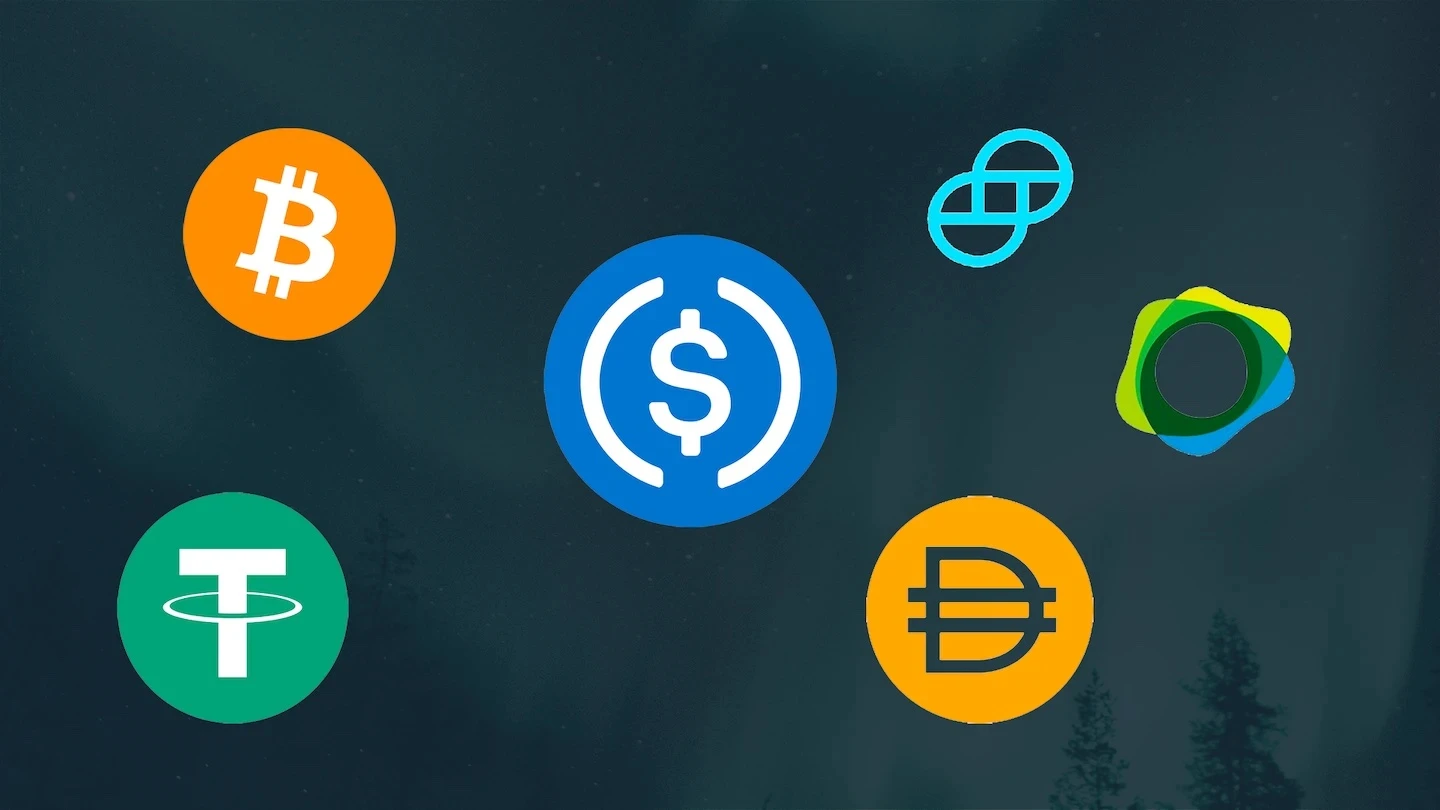Everything About Stablecoins
- 1 What are Stablecoins?
- 2 What Can You Do with Stablecoins?
- 2.1 Send and Receive Money
- 2.2 Store Value
- 2.3 Trade Assets
- 2.4 Earn Interest
- 2.5 Act as Hedges against Inflation
- 3 Types of Stablecoins
- 3.1 Algorithmic Stablecoins
- 3.2 Fiat-collateralized Stablecoins
- 3.3 Crypto-collateralized Stablecoins
- 3.4 Commodity-backed Stablecoins
- 4 Risks of Using Stablecoins
There are two types of cryptocurrencies: altcoins and stablecoins.
Altcoins were the first to appear on the market. However, they tended to be very volatile and often fluctuated on a whim, which led to a huge loss of value. Stablecoins came into the picture to deal with this very issue. There are several other features of these coins that make them a little different from altcoins, as explained in this article.
What are Stablecoins?
Stablecoins are cryptocurrencies that are backed by fiat currencies such as pounds, dollars, and rubles. Other stablecoins are pegged on other assets, such as gold and silver, whose value does not fluctuate fast. Their value is pegged to these currencies to prevent market forces from causing steep inclines or declines. The idea is to have the value of the steady coin relative to the fiat currency that backs it up.
By reducing the volatility of the coin, it makes it suitable for regular use. This added to the low transaction fees, borderless payment, self-custody options, and flexibility, making them appealing to most crypto users. This is why you find many of them in circulation for general use rather than as a form of investment.
What Can You Do with Stablecoins?
Stable coins are practical coins that you can use in your daily life. Their promise on paper also works in real life. Here are a few ways to use stablecoins.
Send and Receive Money
Stablecoins have low transaction fees and a quick processing time. This makes them ideal for transacting across borders. Many of them operate at low chain fees, which makes the cost so low. You will find them alongside altcoins at merchant shops, online platforms, and online gambling sites in Australia that accept cryptocurrencies.
Store Value
Altcoins are a poor store of value as their own value may change in a short while. However, stablecoins are less volatile and remain consistent with the assets they are pegged to. This makes them good stores of value.
Trade Assets
You can use stablecoins as trading pairs when trading in cryptocurrencies. This helps in maintaining value and provides a more practical correlation between the value of the cryptocurrency being traded.
Earn Interest
You can earn interest by lending stablecoins. While staking services are risky, just like in fiat lending, many of them have good returns. Besides, the use of smart contracts has reduced the risk involved in lending services by guaranteeing the value of the amount used.
Act as Hedges against Inflation
Many traditional fiat currencies are usually prone to inflation in economies where there are high-interest rates. People who have their assets in these currencies often suffer a loss of value due to inflation. However, some currencies, such as the euro and the US dollar, have remained stable over the years.
Several stablecoins, such as USDC and Tether, are pegged to the US dollar. Therefore, they inflate less than local currencies. You can exchange your local currencies for these stablecoins and enjoy less inflation, which helps you maintain more of the value of your currency.
Types of Stablecoins
Stablecoins come in various types. Each type has a specific mechanism that stabilizes its value. Here are the different types of stablecoins and their backing.
Algorithmic Stablecoins
These stablecoins use algorithms and economic design in order to maintain a consistent value in the market. They are the newest forms of stablecoins and are unproven. Therefore, they carry more risk than your traditional coins. You should invest in them with care and a little background research.
Fiat-collateralized Stablecoins
The coins keep a reserve of fiat currency like the US dollar as collateral. This ensures that these coins have a stable value. These types of coins are the most popular on the market and are widely accepted by outlets around the globe.
Crypto-collateralized Stablecoins
Cypto-pegged stablecoins tie to such digital currencies as Ether or Bitcoin. These reserve cryptocurrencies are volatile. To counter this, the reserves are higher than the market cap of the stablecoins they are pegged on. This over-collateralization ensures a sound economic design.
Commodity-backed Stablecoins
As the name suggests, commodity-pegged stablecoins use commodities like metals such as silver and gold or commodities like crude oil. These are more stable than most of the types above.
Risks of Using Stablecoins
Stablecoins have several advantages but carry risks too. Here are some of the risks.
Depegging
Depegging is the case when stablecoins fall from their intended value. This may cause the investors to lose cash in the process. Luna Coin is an example of what depegging can do to stored value.
Regulatory Issues
Like altcoins, cryptocurrencies are also susceptible to regulatory risks. Several launches have been cancelled and some coins have gone down when they got a backlash from financial regulators.
Inflation of Pegged Assets
The pegged assets are not immune to inflation. The inflationary pressure on these assets is felt by the stablecoins that are pegged on them. While the inflation of the major currencies has not been so high over the years, it still affects the attached stablecoins.
Stablecoins are a new way to invest in the cryptocurrency world. They are a good gateway for conscious buyers who are looking for a way to gain a foothold in this market. In addition, they act like fiat money and can be used for transactions locally and across borders.


















